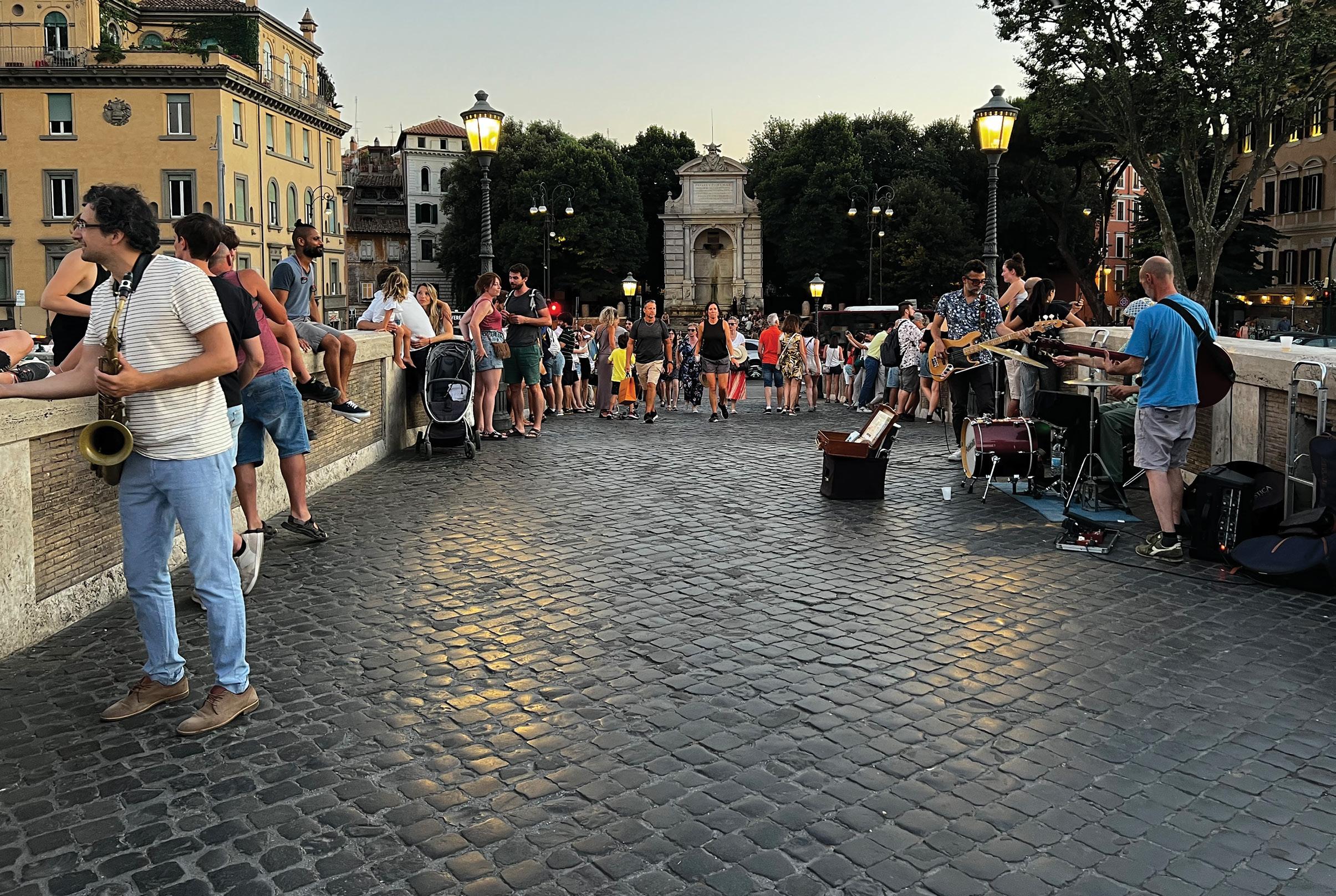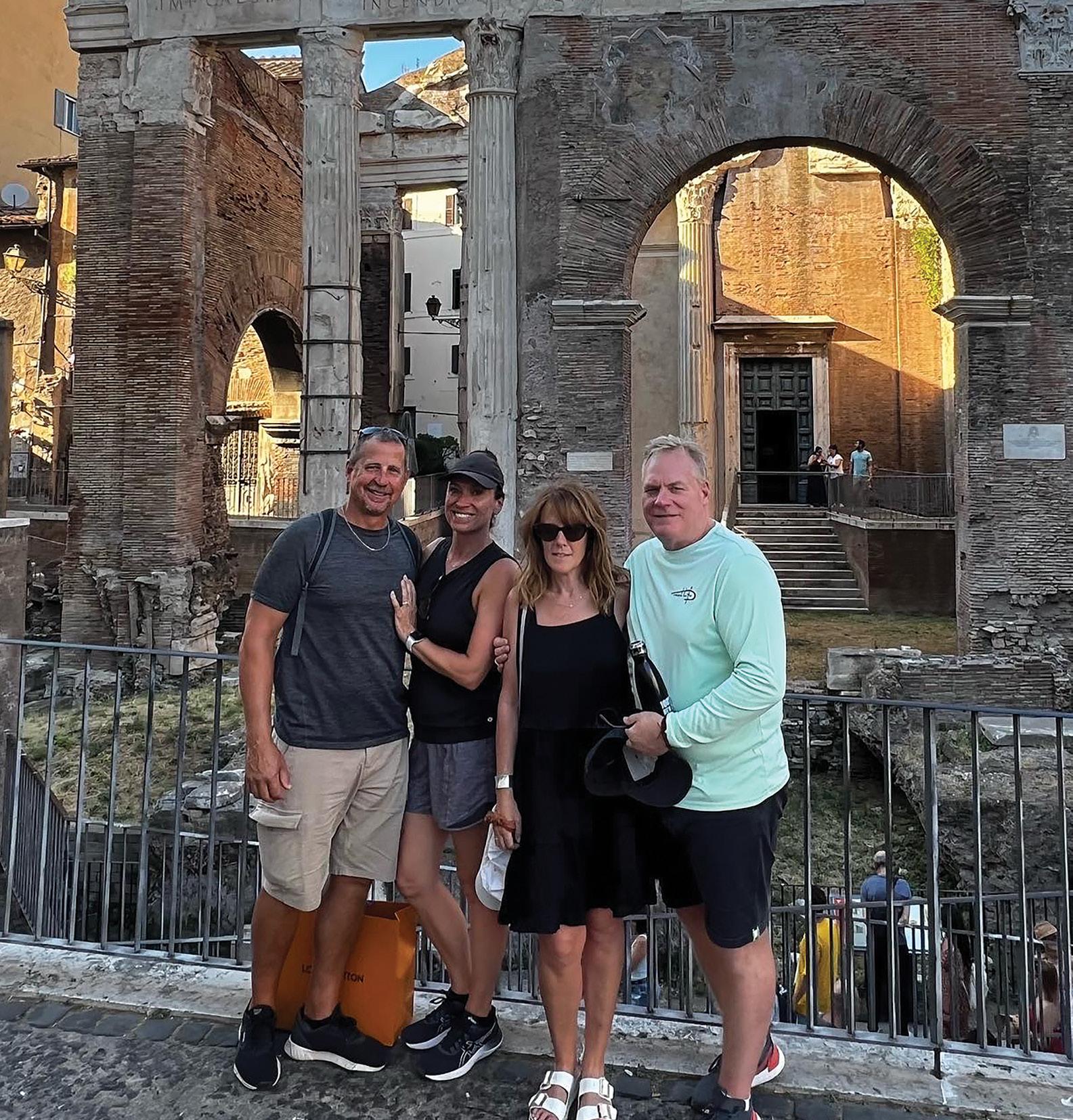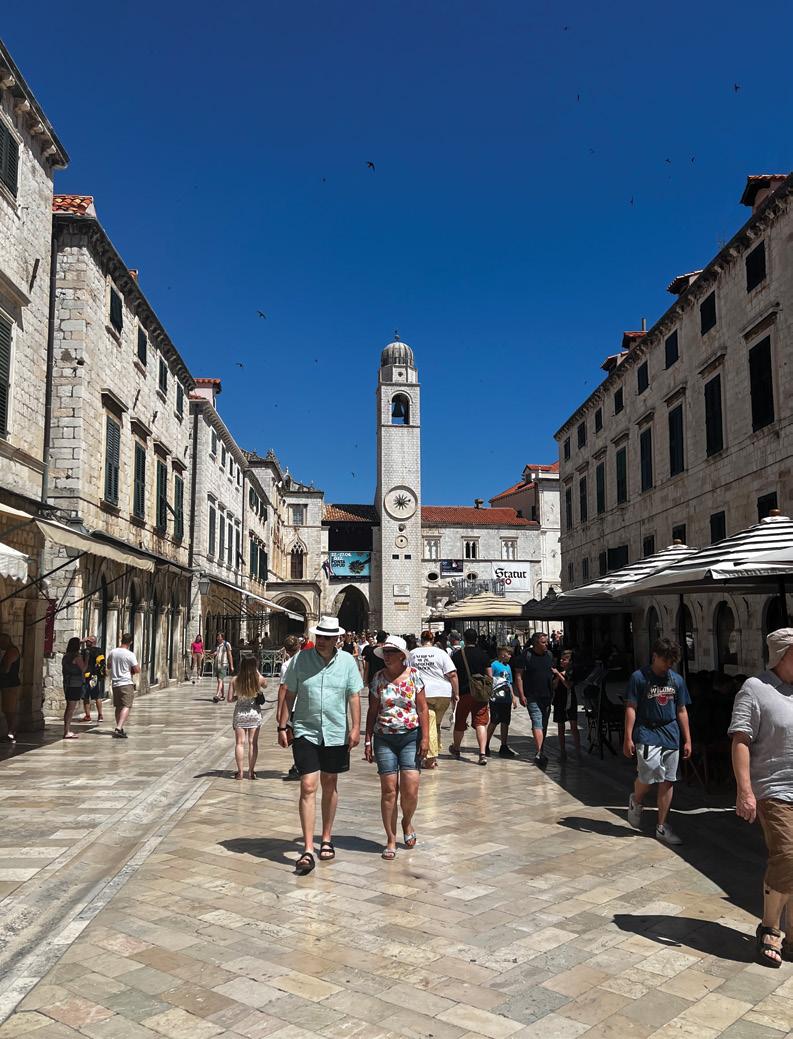
6 minute read
PLAN AHEAD: LESSONS
Plan AHead: Lessons on Travel in the Age of the Pandemic
By Carolyn Weppler
Travel has changed and evolved tremendously over the last two and a half years, but we’re still in the age of the pandemic and will be feeling its ripple effects for a generation. One of the key changes has been a new focus on organization and planning in the world of travel.
When I was a Destination Specialist many years ago, most travellers wanted the freedom to stay a little longer in one place, leave a little earlier from another, and have the flexibility to make changes on the fly. Those days are gone and will likely be gone for any high-season travel for the foreseeable future. With limited rental cars, smaller group size excursions, hotels that have limited rooms operating, and fewer people working in hospitality, it is imperative to be organized to ensure the smoothest travel experience possible.
But not everything has changed for the worse. There are upsides to this new focus on planning ahead. My recent travels bear evidence of this. On my most recent vacation visiting Croatia and Italy, we organized everything including a few special restaurant reservations in advance. We wanted to avoid renting a car or taking large group transportation, so we opted to book a car and driver for the longer trips and pre-booked daily excursions, splitting costs across the travel party. We also worked with local guides for walking tours, pre-arranged wine tastings, food pairings, olive tastings, and even cheese tastings. All of this pre-planning led to some memorable times that we wouldn’t have had in the past.
One day, we explored Pag, a windswept rocky island in the Adriatic just off the Croatian coast. Our tour on the island included a cheese tasting of the delicious multi-award-winning Paski Sir sheep’s milk cheese, which is produced from smaller sheep with limited milk production. Afterwards, we headed over to the Boskinac Winery for a private tasting and food pairing. As Pag is off the beaten path and we were visiting on a Tuesday, the island was quiet and the restaurant’s sommelier joined us for a few minutes to give further insight into the wines and accompanying food, which was all locally sourced. The restaurant boasted a Michelin star and all the food for the tasting came from their kitchen, offering us a true gastronomic treat.
We had similar experiences across the Istrian region of Croatia. We went truffle hunting, wandering through pine and oak forests alongside a guide and his trained dogs, feasting on local dishes prepared with fresh truffles at a small local winery, with delicious wines that are only produced for the local community. We also visited the city of Pula, where we gazed upon the remarkable Roman Forum, one of the few Roman buildings with

Packing a little patience goes a long way.

Click here for inspiring travel ideas.

all its original pillars intact.
If I had visited Croatia before the pandemic, it’s unlikely that I would have explored Pag and Istria the way I did, if I had even explored them at all. But circumstances being what they are led us to places with smaller crowds and the opportunity for more intimate travel experiences. We closed one door and opened another, with new travel memories awaiting us on the other side. We also saved ourselves a lot of time by planning ahead.
Before the pandemic, I would normally arrive in a new destination and wander around with a guidebook or smartphone in hand, discovering landmarks and streets on my own time. I still hope to explore like this again, but it admittedly eats up a lot of time. But this time around, I arranged private walking tours with skip-the-line entry at museums and historic landmarks, which ensured that we missed nothing and wasted no time in long ticket lines. As well, our private guides knew all the back routes and quieter streets, ensuring extra space and little insights into the local ways of life.
When we toured Dubrovnik, there were still crowds aplenty, but our guide taught us all sorts of shortcuts to move around easily. He also gave us some local recommendations on sunset bars and restaurants tucked away in hidden corners of the city, letting us know to make reservations ahead to secure the perfect evening spot. And reservations are needed at all but the most touristy spots, so if you’re hoping for a good meal, book ahead. Beyond Dubrovnik, there were quiet spots in Korcula and Hvar, which offered boutique hotel accommodations with a maximum of eight to 10 rooms, outdoor dining, and landmarks with fewer visitors than the bigger cities.
Another thing that has changed remarkably during the pandemic is baggage delays: they are everywhere! The best way to avoid delays of any kind is to do carry-on. Leave that extra pair of shoes at home, stick to some essential outfits, and use your hotels’ toiletries and laundry services. You’ll be glad you did as you disembark your flight and stroll right outside the airport to your waiting transfer vehicle, bypassing the delays inside. Also consider travelling with a smartphone with some form of data so you can easily stay in touch with guides and drivers in case of lastminute changes.
Because things can change at a second’s notice these days. It’s important to have some compassion and understanding in this new age of travel. Companies are strained, service workers are overworked, and many people in hospitality that you meet during your travels may have just started a new job as the industry madly scrambles to rehire. Packing a little patience goes a long way. I had many interesting and positive conversations with people by just extending a little grace their way, and in return, I learned about their lives and about how they had just moved to new cities to start fresh careers. What hasn’t changed in the midst of all the economic upheaval, shutdowns and quick restarts, and general uncertainty over travel is the magnificence of the places themselves. The vibrancy of Rome is the same now as it was three years ago as it has been during its long history dating back to 753 BC. There are still throngs of people tossing pennies into the Trevi Fountain, marching up and down the Spanish Steps, gazing in awe upon Michelangelo’s Sistine Chapel and Pieta in the Vatican City, contemplating the Pantheon’s concrete dome, exploring the Forum and the Colosseum, eating street food, splurging on fine dining, or simply get lost in local neighbourhoods and relaxing with an espresso on a patio while people watching. This was Rome when I visited in 1993 and this will be Rome in June 2023. At least there are some improvements in the interim, such as no trucks or buses allowed in the CBD and some road reroutes so the Colosseum is no longer in the middle of a roundabout.
There is also still the opportunity to go beyond the most popular destinations and experience the world’s many wonders in places less iconic that Rome. I travelled to Belize and Guatemala in January 2022. I explored the Maya ruins in Caracol and Tikal, walked through the colonial streets of UNESCO-listed La Antigua, gazed upon the beauty of Lake Atitlan and the surrounding volcanoes, and relaxed on the sandybeaches of Caye Caulker, Ambergris, (Continued on Page 26)












